Internal Block Diagram
Overview
An internal block diagram can be used to describe the relationship of properties within the block diagram.
This page explains the operations for using the internal block diagram in the following order.
- Place internal block diagram
- Define the part
- Define a directed connector
We also provide the following features to assist users in their modeling:
These will also be explained in turn.
- Set display content
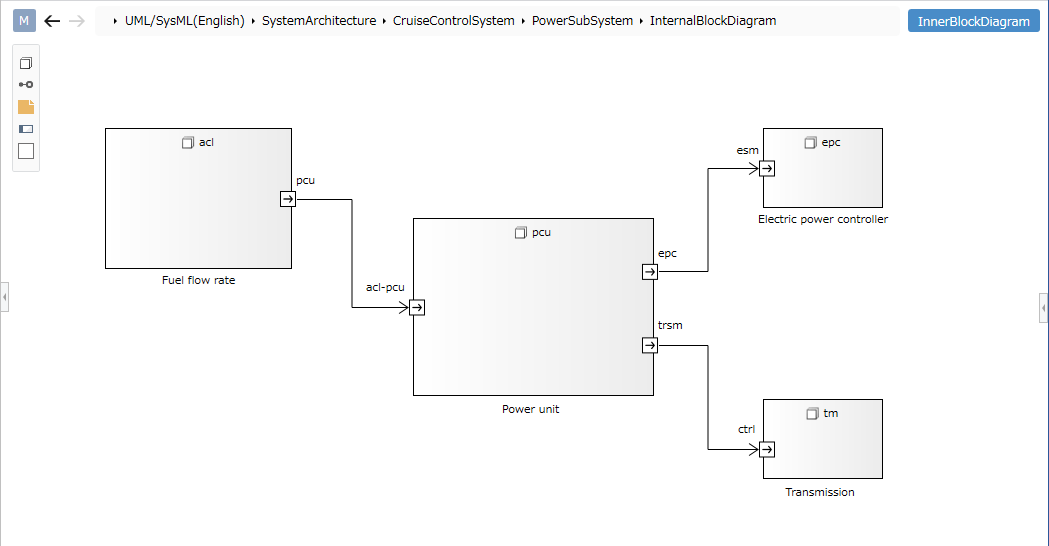
Place internal block diagram
To place an internal block diagram, follow these steps:
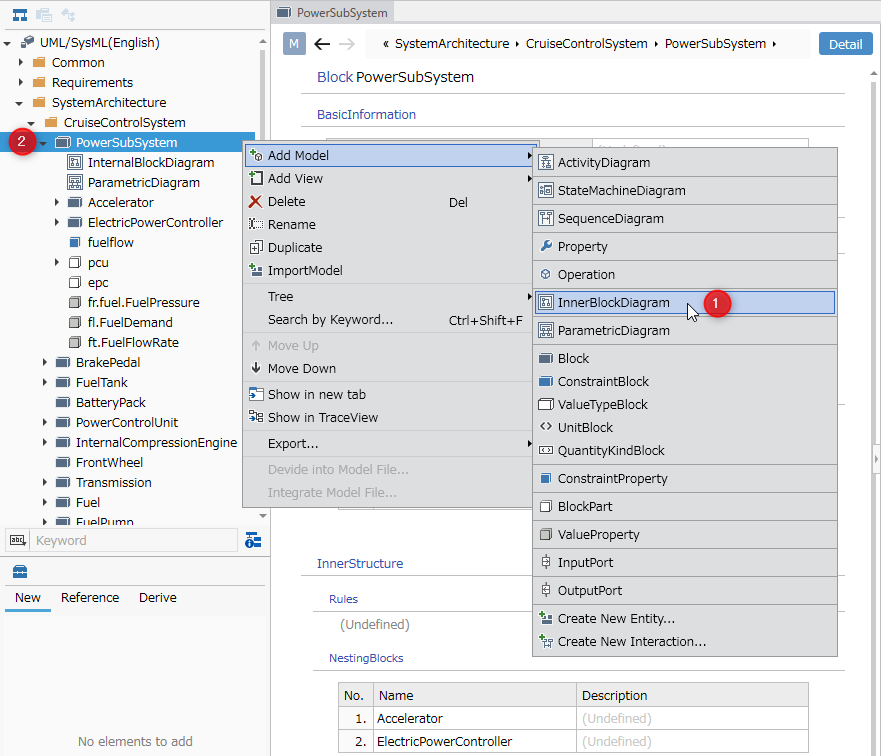
- Select the block in the model navigator and click [Add Model] > [Internal Block Diagram] from the context menu.
- The internal block diagram is placed in the child element of the selected block.
Define the part
Add part
To add a part, follow these steps:
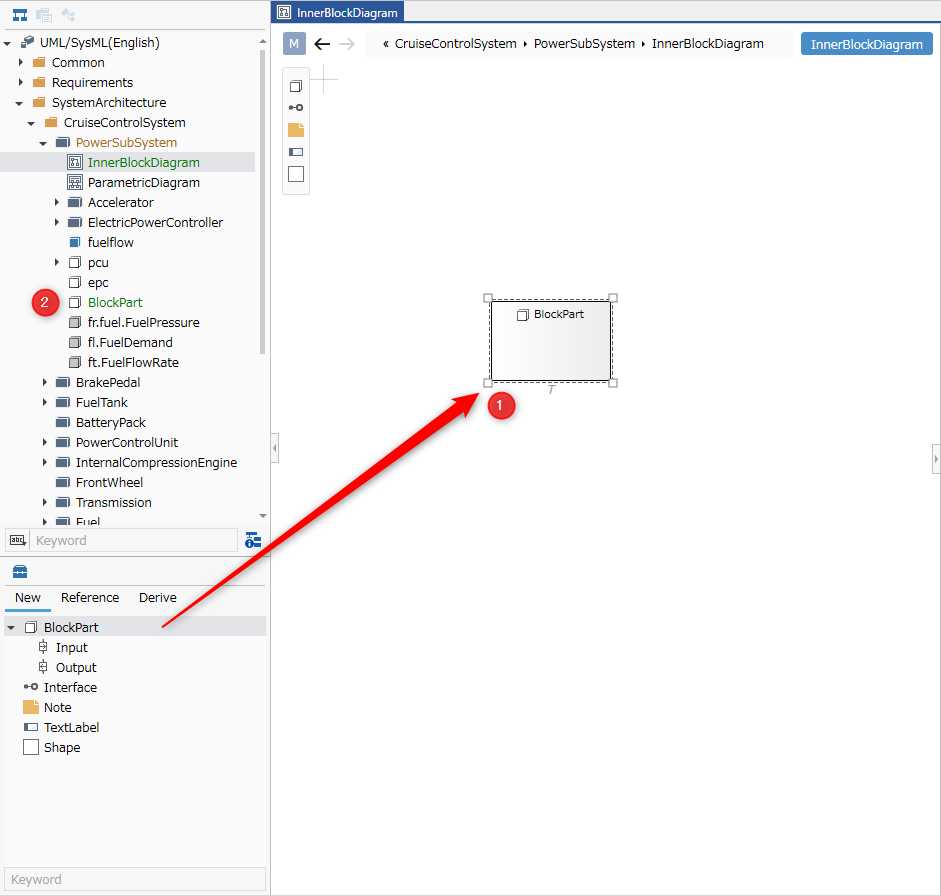
- Drag and drop [Part] from the toolbox onto the displayed internal block diagram.
- A new part will be added as a sibling element to the displayed internal block diagram.
The following elements displayed in the toolbox can be placed on the internal block diagram.
| Icon | Name |
|---|---|
| Part | |
| Input | |
| Output | |
| Interface | |
| Note | |
| Label | |
| Shape |
Inputs and outputs are placed as port shapes on the following elements, but cannot be added from the toolbox. By setting a block to the part type, the input/output of the block will be reflected on the diagram.
- part
Add stereotypes to parts
To add a stereotype, follow these steps:
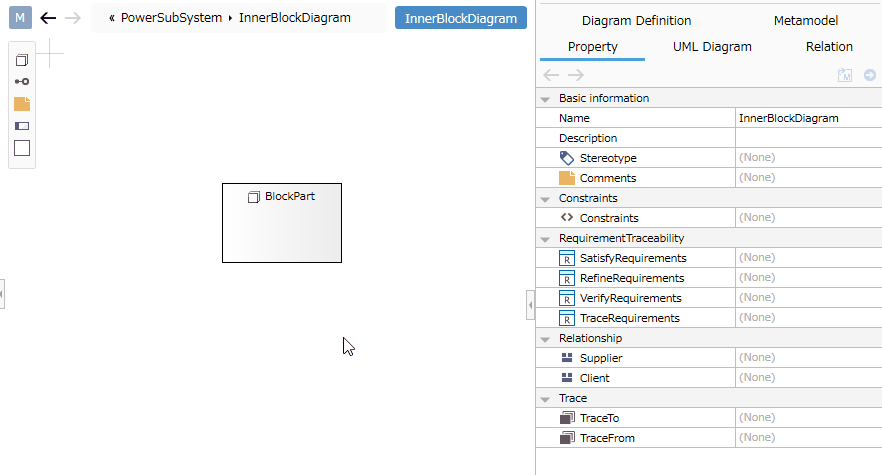
- Select a part.
- Click the Add button in the Basic information > Stereotype field in the Property Inspector to display the choices.
- Select a stereotype and press the [OK] button to set the stereotype to the part and display it on the part shape.
Stereotype choices can be defined in the package model's Detail view.
Once you have added a stereotype, you can edit it from the internal block diagram by following these steps:
- Double-click the stereotype displayed in the part to enter editing status.
- When you change the stereotype and confirm the edit, it will be reflected on the internal block diagram and the part stereotype will be changed.
To display an existing part on the internal block diagram, drag and drop the part on the model navigator onto the internal block diagram.
Set the type
To set a type for a part, follow these steps:
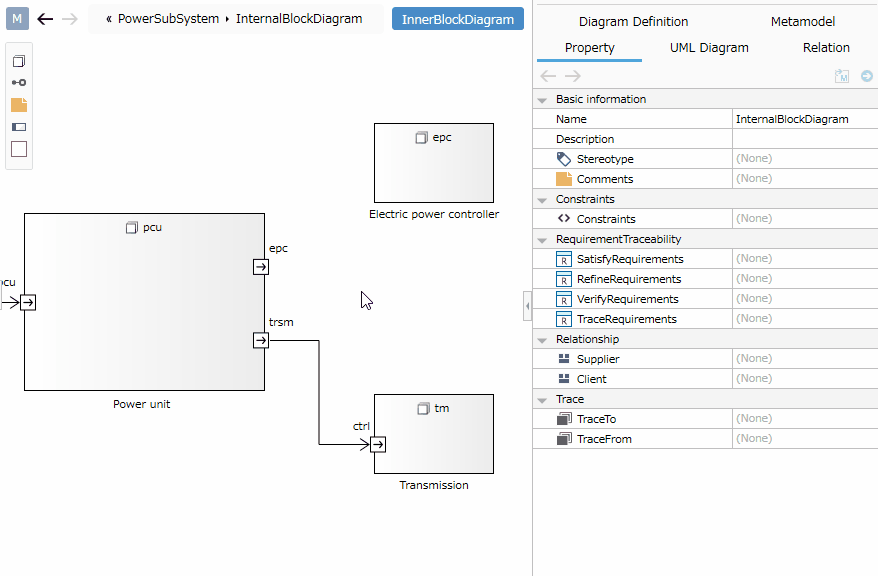
- Select the part on the displayed internal block diagram and display the [Property] inspector.
- Click the [+] button in the [Type] property, select the block in the finder that appears, and press the [OK] button.
- The type is set for the part, and the inputs and outputs defined in the block are displayed as ports on the part shape on the internal block diagram.
If you want to edit the input/output of a part, it will be automatically reflected by editing the input/output of the block set to the part type.
Define a directed connector
To define a directed connector, follow these steps:
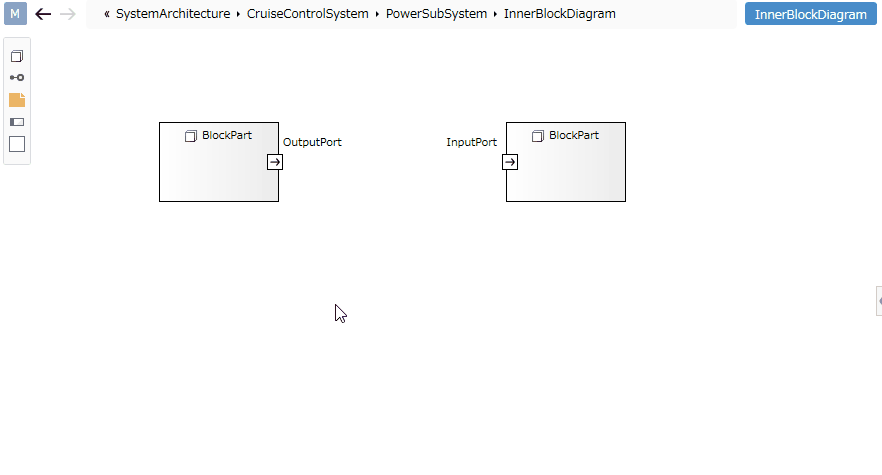
- Move the pointer over the output port.
- Drag the [▲] icon that appears outside the output port and drop it onto the input port.
Edit the multiplicity of a directed connector
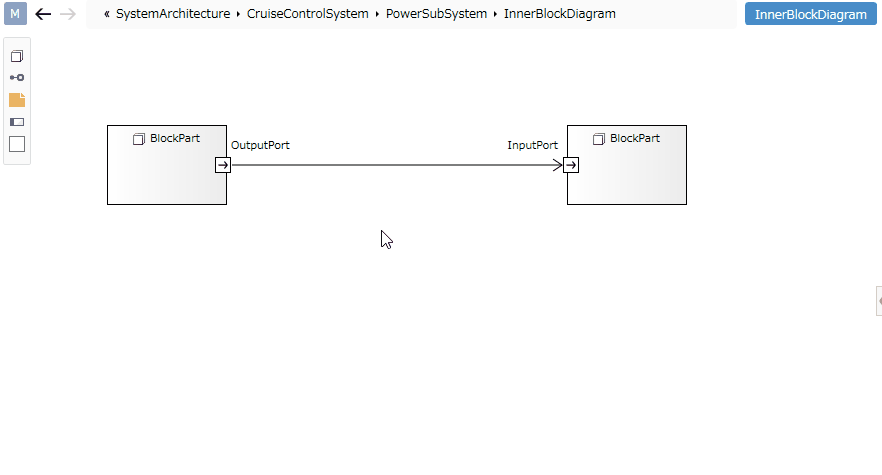
- Select a directed connector.
- Double-click the grayed-out [*] to enter editing mode.
- Enter the multiplicity you want to set, the multiplicity will be set to the directed connector, and the multiplicity will be displayed on the directed connector in the internal block diagram.
Edit the associated end name of a directed connector
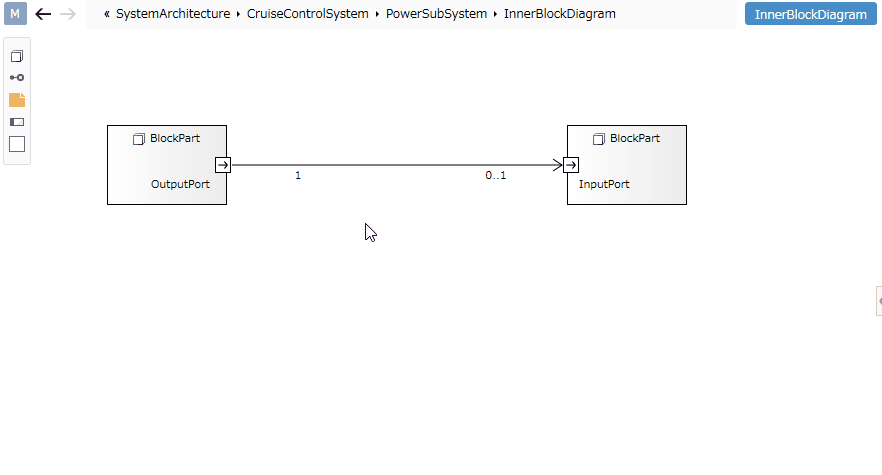
- Select a directed connector.
- Double-click the grayed out [-] to enter editing mode.
- Enter the related end name you want to set, and the related end name will be set in the directed connector and displayed on the directed connector in the internal block diagram.
Add stereotypes to directed connectors
To add a stereotype, follow these steps:
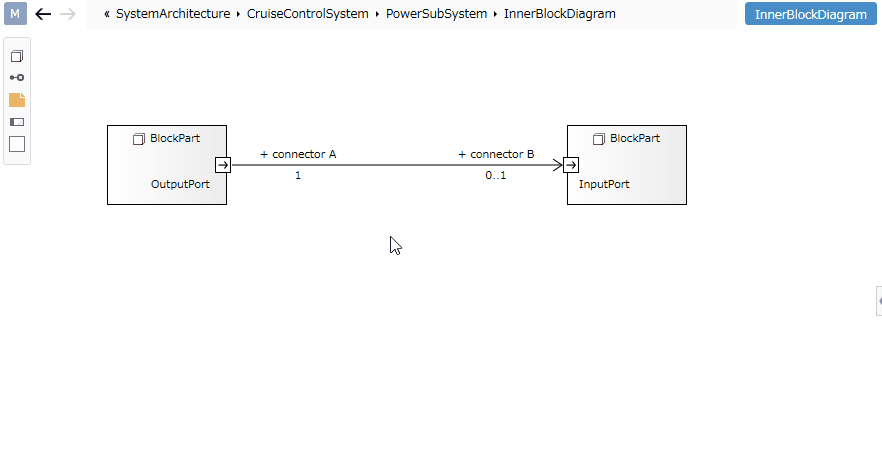
- Select a directed connector.
- Double-click the grayed-out [<<stereotype>>] to enter editing mode.
- Enter the stereotype you want to set, the stereotype will be displayed on the directed connector in the internal block diagram, and the stereotype will be set on the directed connector.
Set display content
By simplifying elements on the internal block diagram, you can display only the information you are interested in without changing the state of the model. For example, to quickly view the visibility of relationships, follow these steps:

- Display the internal block diagram whose display you want to switch.
- From the Inspector's [UML Diagram] tab, toggle the visibility checkbox in the [Relationship] group.
You can switch the display of the following elements on the internal block diagram.
| Category | Element |
|---|---|
| Common | Stereotype |
| Relationship | Visibility |
Restrictions
- It is not possible to add a port corresponding to the part (it will be automatically reflected by adding it to the type block).